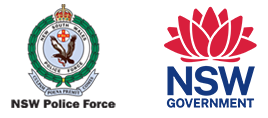Types of illicit drugs
Definitions via Your Room. A joint initiative by NSW Health and St Vincent's Alcohol and Drug Information Service.
Ecstasy
Ecstasy tablets are supposedly made up of the primary ingredient methylenedioxymethamphetamine (MDMA), but as the ingredients required to make synthetic drugs are becoming more difficult to obtain, the formulation of pills marketed as ecstasy can vary greatly. They are more likely to contain methamphetamine (speed) combined with a synthetic hallucinogen or para-methoxyamphetamine (PMA). More informtion
Marijuana
Marijuana (cannabis) primarily comes from the cannabis plant (cannabis sativa). The cannabis plant is also used to produce hashish (hash) and hash oil. Of the three, marijuana (cannabis) is the most common but all forms of the drug are capable of causing a variety of physical and mental problems resulting from intoxication and long-term use. More information
Methylamphetamine
Methylamphetamine is a strong stimulant drug. The drug comes as crystals, powder, wet paste and sometimes pills. ‘Ice’ and ‘crystal’ are names for methylamphetamine in its crystalline form. ‘Speed’, ‘go-ee’, ‘whiz’ and ‘meth’ are other names for methylamphetamine. All forms of methylamphetamine are illegal. More information
Cocaine
Cocaine, or coke as it is commonly known, is a stimulant and has a similar effect to amphetamines like speed and ice, but produces a more intense effect and shorter ‘high’ depending upon dosage. Cocaine is a white crystalline powder with a bitter numbing taste. More information
GHB
GHB is a drug commonly found in the dance scene and is sometimes referred to as liquid ecstasy due to its stimulating, euphoric and supposed aphrodisiac qualities. Chemically-speaking, it is not related to MDMA at all. Mildly salty in flavour, yet colourless and odorless, it’s also used a date-rape drug – when mixed with alcohol, it can intoxicate quickly. More information
Heroin
Heroin is one of a group of drugs known as "opiates". Other opiates include opium, morphine, codeine, pethidine, oxycodone, buprenorphine and methadone. Heroin and other opiates are depressants. Depressants do not necessarily make you feel depressed. Rather, they slow down the activity of the central nervous system and messages going between the brain and the body. More information
New Psychoactive Substances
New psychoactive substances are chemicals that have been developed to have similar effects to illegal drugs like cannabis, cocaine and methamphetamine. A wide variety of these drugs have appeared in Australia in the past few years. New psychoactive substances are generally sold online and through adult stores and tobacconists.
They are marketed with confusing or misleading descriptions such as ‘legal highs’, ‘herbal highs’, ‘bath salts’ or ‘plant food’. Products may be labelled ‘not for human consumption’ or ‘for novelty purposes’ despite the fact that they are intended for use as drugs. While they are sometimes referred to as ‘research chemicals’, these substances do not have a legitimate pharmaceutical or therapeutic use. More information
Other
There is a wide range of other drugs out there that are just as dangerous as the more commonly used ecstasy or marijuana. These drugs include depressants (such as sleeping pills), hallucinogens like LSD, ketamine or inhalants. While they are legal, alcohol and tobacco are also drugs that can have dangerous consequences if misused. More information

